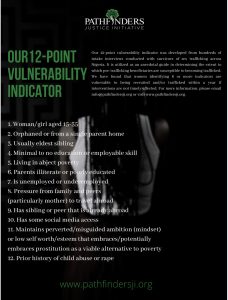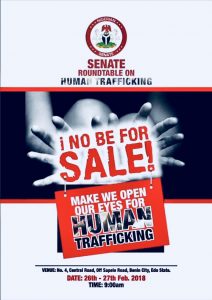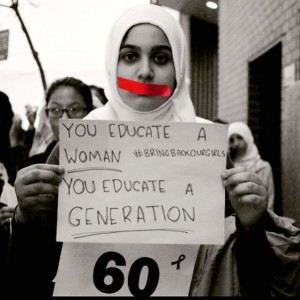
• Human trafficking, a form of modern day slavery, involves the illegal trade of people for exploitation or commercial gain and is a $150 billion global industry. Two thirds of this figure ($99 billion) is generated from commercial sexual exploitation, while another $51 billion results from forced economic exploitation, including domestic work, agriculture and other economic activities. Supra. The average woman trafficked for forced sexual servitude/exploitation generates $100,000 in annual profits (anywhere from 100% to 1,000% return on investment) (Organization for Security and Co-operation in Europe (OSCE)). According to the United Nations, the smuggling route from East, North and West Africa to Europe is said to generate $150 million in annual profits ( $35 billion globally).
• 2021 estimates recently released by Walk Free Foundation, International Labour Organization and International Organization for Migration in May 2023 indicate that there are an estimated 50 million victims of modern slavery worldwide. It is noteworthy that the UNODC’s 2020 Global Report on Trafficking in Persons now estimates the number of children in slavery at 30% of all global victims, while 79% of those trafficked for sexual exploitation (the most common form of human trafficking, are women and girls. 99% of the 4.8 million victims of commercial sexual exploitation in 2016 were women and girls (ILO, 2017). Women and girls represented 84% of the 15.4 million people in forced marriages, and 59% of those in private forced labour (8.7 Alliance 2017 Report). The Index maintains that modern day slavery is most prevalent in Asia and the Pacific.
• Human trafficking is a high profit, low risk business which allows traffickers to generally operate with impunity. Globally, in 2021, there were only a total of 10,572 prosecutions (up from 9,876 in 2020) and 5,260 convictions (up from 5,011 in 2020). Of all the global victims, only 90,354 were identified (down from 109,216 in 2020). See 2022 U.S. State Department Trafficking In Persons Report. In Africa, a total of 1,686 prosecutions (up from 1,493 in 2020) and 659 convictions (up from 382 in 2020) were generated in 2021. A total of 11,450 victims (considerably down from 28,538 in 2020) were identified. See 2022 U.S. State Department Trafficking in Persons Report.
• Nigeria remains a source, transit and destination country when it comes to human trafficking. See 2022 U.S. State Department Trafficking In Persons Report. Per the 2023 Global Slavery Index Report, Nigeria ranked 38/160 of the countries with the highest number of slaves – 1.6 million – and its National Agency for the Prohibition of Trafficking in Persons (NAPTIP) reports that the highest number of trafficked persons in Nigeria, which maintains its posture as a Tier 2 country on the U.S. State Department’s Trafficking In Persons Report (2022), are women who are 18+ (NAPTIP 2021 Report). According to NAPTIP statistics from 2019- 2022, 61% of human trafficking in Nigeria happens internally, while 39% is generated from cross-border trafficking. It is the third most common crime in Nigeria after drug trafficking and economic fraud (UNESCO, 2006). The general factors that increase vulnerability to trafficking in Nigeria include extreme poverty (33% -70 million people) live in extreme poverty), lack of economic opportunities, corruption, conflict/insecurity, climate change/resulting migration and western consumerism.

• The total number of human trafficking victims outside of Nigeria is largely unknown. However, it is undisputed that principally due to Nigeria’s population, Nigeria is routinely listed as one of the countries with the largest number of trafficking victims overseas (particularly in Europe), with victims identified in 34 countries in four regions in 2018. The recent scourge of unsafe migration has highlighted Nigeria’s challenges in this area, with one former Nigerian Permanent Representative to the United Nations (Mr. Martin Uhomoibhi) contending in June 2017 that in 2016 alone, 602,000 Nigerians endeavoured to migrate to Europe via the Sahara Desert. According to Mr. Uhomoibhi, 27,000 of these migrants died en route. Also pretty alarming is his claim that of those who perished on the journey, 68% were Nigerian university graduates. Most estimates, however, place the total number of Nigerians arriving Europe in 2016 at about 40,000 and about 18,000 in 2017 (men, women and children). In 2016, Nigerians accounted for about 21% of the total 181,000 migrants braving the Mediterranean to arrive into Italy. In 2017, that number decreased to 15.5% of total migrants arriving Italy (119,000) in light of the numerous efforts made by Italy and the European Union to stem the flow of migrants from Libya. UNHCR statistics indicate that in 2018, the number of Nigerian arrivals by sea and land into Europe continued to decline (1,250 arrived in Italy- 5% of total arrivals). Since then, Nigerian arrivals have continued to decline. According to UNHCR statistics, Nigerians were not amongst the top 10 nationalities of arrivals by land or sea into Greece, Spain or Italy (the three primary countries for arrivals) in 2019 or in 2020. (In fact, in Italy, Nigerians represented a meagre 2.1% of the total 11,000 land and sea arrivals in 2019 and numbers have continued to drop since 2017.) The UN’s International Organization for Migration (IOM) further reports that as of April 2022, there were approximately 649,788 migrants in Libya, of which Nigerians represented approximately 5% (32,000). According to UNHCR, it currently has (as of August 2022) 43,000 registered refugees and asylum-seekers in Libya. Again, Nigerians are not within the top 9 nationalities registered with UNHCR in Libya, the country which many experts have considered the unsafe migration gateway into Europe (particularly from Sub-Saharan Africa) in recent years. Those statistics notwithstanding, the total number that currently embark on the journey from Nigeria to Europe remains largely unknown.
Historically, the overwhelming majority of trafficking victims and migrants made the treacherous journey from Edo State (particularly Benin) and Delta States to Kano, from where they are smuggled into Niger or Algeria before traversing 500 miles over the Sahara Desert into Libya. (It is noteworthy that even during the height of the COVID-19 pandemic and its supposed lockdowns in March–April 2020, migration flows continued from Nigeria, with Nigerian men (primarily) crossing from Nigeria into Niger.) In 2021, most trafficking victims rescued by NAPTIP (2021 Report) were from Benue State (12.3%).
Prior to 2020, however, Edo State had been a prime source for trafficking victims. In fact, CNN reported that Edo State was the most trafficked through destination in Africa. (It should be noted that according to NAPTIP’s latest figures reported in its 2021 Data Analysis Report, Edo State is no longer featured in the top five states for trafficking victims.) In Libya, migrants are held in detention camps, generally for several weeks to months, before they are placed in unseaworthy dinghies or boats on the Mediterranean Sea. According to IOM, there are approximately 159,996 IDPs (as of April 2022) and 649,788 migrants in Libya (as of April 2022), the country from which a large percentage of migrants attempt the journey into Europe. Organ trafficking has been on the rise in Libya. According to IOM, as of April 2022, approximately 32,000 Nigerians remain as migrants in Libya. NAPTIP, in its latest 2021 Data Analysis Report, confirms that the largest number of victims rescued outside of Nigeria were rescued from Mali (was UAE in 2020), Burkina Faso and UAE and are from Benue State, followed by Akwa Ibom, Ogun, Sokoto and Kano. 2020 and 2021 were the first, in recent years, that most victims rescued by NAPTIP were not from Edo State.
• Previously, there were more readily available statistics on the numbers of women who are trafficked from Nigeria into Europe, particularly into Italy. According to IOM, approximately 11,000 women arrived via the Mediterranean Sea into Italy in 2016, again mostly from Edo. IOM estimated that 80% of those young women arriving from Nigeria – whose numbers soared from 1,454 in 2014 to 11,009 in 2016 – were likely forced into prostitution as sex trafficking victims. Supra. (According to Italian authorities, there are between 10,000 to 30,000 Nigerian women working in prostitution on the streets of Italy.) 90% of migrant women arriving into Italy from Libya arrive with bruises and other signs of violence. (In general, 83.5% of all Nigerians interviewed in 2017 reported to have suffered from physical violence of any kind during the journey, most often in Libya. A more recent December 2018 UN Report notes narratives by Nigerian migrants of unlawful killings, gang rape, prostitution, arbitrary detention, torture and inhumane treatment, unpaid wages, slavery, human trafficking, racism and xenophobia in Libya.) In 2017, a total of 18,000 Nigerian migrants were recorded to have arrived into Europe via the Mediterranean, 5,400 of which were women (UNHCR, 2018). It is noteworthy that between 2014-2016, IOM recorded an almost 600% increase in the number of potential sex trafficking victims arriving in Italy via the Mediterranean. That figure is now on the decline, as Nigerians were no longer within the top nationalities of arrivals by land or sea in 2021 and 2022.

• Figures from Edo also remain on the decline. Previously, however (according to IOM), an astounding 94% of all Nigerian women trafficked to Europe for prostitution hailed from Edo State, with Italy being the number one destination country. In fact, a 2003 United Nations Interregional Crime and Justice Research Institute Report concluded that “virtually every Benin family has one member or the other involved in trafficking either as a victim, sponsor, madam or trafficker.” The souls and bodies of survivors are turned into commodities for financial gain while the survivors themselves are held in debt bondage, severely abused (often gang raped and physically assaulted), starved, tortured or infected with various sexually transmitted diseases before being deported back to Nigeria. (On average, each survivor we partner with has ensured sexual slavery for 3-5 years, having been forced into prostitution on 4,000 occasions.) Others who are victims of organ trafficking are murdered and never make it back to Nigeria.
In August 2017, the current Edo State Governor, Mr. Godwin Obaseki, launched the Edo State Task Force Against Human Trafficking to fight the scourge of human trafficking and unsafe migration in the State. (The multiagency and multidisciplinary Task Force was a recommendation by Pathfinders to the Governor following our successful consultation for the state and organization of the Edo State Workshop on Human Trafficking in May 2017.) Codification of the Task Force to investigate and prosecute trafficking cases in Edo (total of 38 investigations and 22 pending prosecutions in 2019- down from 56 investigations and 20 prosecutions in 2018), following an allocation of N242 million by the state government) occurred on May 23, 2018 when Governor Obaseki signed into law the Edo State Trafficking in Persons Prohibition Bill (2018) in Abuja. The Act, which was approved by the Edo State House of Assembly in March 2018 (just shortly after the Oba of Benin’s pronouncement on March 9th renouncing all curses which had been placed on victims of human trafficking in Edo State by juju priests), “provides an effective and comprehensive legal and institutional framework for the prohibition, prevention, detection, prosecution and punishment of human trafficking and related offenses in Edo State,” according to Governor Obaseki. Thereafter, Delta State followed suit, creating its own anti-trafficking Task Force in April 2019. (In October 2020, NAPTIP went on to initiate, in partnership with the state governments of Ebonyi, Enugu, Anambra, Ogun, Oyo, Lagos and Cross-River, additional anti-trafficking task forces. As of August 2022, a total of 22 State Anti-Trafficking Task Forces exist around the country.)
It is noteworthy that since the Oba of Benin’s March 2018 pronouncement, the introduction of the Edo State law, the efforts of local stakeholders, the ETAHT’s efforts, international donor efforts targeting the reduction of trafficking in Edo State and the European Union’s (EU) externalization policies of border control and accompanying legislative wall, traffickers began pushing the trade underground and/or recruiting naive victims from other States, including Abia, Delta, Ebonyi, Kogi, Ondo, Imo, Bayelsa and Calabar. The COVID-19 pandemic and its resulting impact on inflation and economic hardship have exacerbated trafficking. Trafficking from Nigeria to other African countries (particularly Mali, Burkina Faso and Benin Republic) and the Middle East is also on the rise, with UAE being the primary Middle Eastern destination country from which would be victims are currently rescued (NAPTIP 2021 Report).
In December 2016, the EU and IOM developed the Joint Initiative for Migrant Protection and Re-integration in Africa to address the challenges of unsafe migration. The Initiative is being implemented in 14 African countries, including Nigeria, where as of August 2022, 27,000 migrants have been voluntarily repatriated (mostly from Niger and Libya). As of March 2022, a total of 16,000 Nigerians have received voluntary return assistance, while almost 20,000 have received reintegration assistance via the Joint Initiative. Prior to the development of the aforementioned Joint Initiative, i.e., in March 2015, Nigeria entered into the Common Agenda for Migration and Mobility Agreement with the EU to address the following: (1) improving legal migration and mobility; (2) preventing and combatting unsafe migration and human trafficking; (3) addressing the root causes and maximizing the development impact of migration; and (4) promoting international protection and support for internally displaced persons. The EU continues to negotiate a readmission agreement with Nigeria that would force repatriations, in light of its current 25% return rate.
According to the US State Department’s 2022 TIP Report, collective state and federal authorities investigated a total of 1,515 cases (up from 833 in 2020), prosecuted 94 suspects (up from 49 in 2020), and convicted 13 traffickers (down from 36 in 2020). (NAPTIP’s 2021 Report indicates that in 2021, NAPTIP received 254 cases for investigation and prosecuted 36 cases, resulting in a total of 31 convictions. In addition, according to NAPTIP, 5 of the 31 convictions related to the “procurement of persons for sexual exploitation,” 7 relating to “foreign travel which promotes prostitution” and 8 convictions relating to “fraudulent entry of persons.”
• NAPTIP rescued a total of 1,450 victims of trafficking in 2021, of which 1,266 were women. Although “foreign travel which promotes prostitution” was previously the largest category for Nigerian female trafficking victims who travel abroad, same has now been overtaken by child abuse cases (312 total in 2021, of which 215 were girls). Procurement for foreign travel which promotes prostitution is now the second largest category for trafficking victims (a total of 288, all of which were women). 250 women (100%) were victims of ‘procurement for sexual exploitation externally,’ in 2021 while 150 women (98% of total victims) were victims of ‘procurement for sexual exploitation internally.’ (NAPTIP 2021 Report.) Thereafter, the employment of children as domestic workers was reported, along side internal and external forced labour, followed by sexual abuse. According to the same Report, most reported male victims of trafficking are between ages 0-11, with most female victims (the overwhelming majority of identified victims in Nigeria) being over 18 years of age. Most rescued victims from NAPTIP’s 2021 Report were from Benue State (175, 12.3%), with Akwa Ibom (95, 6.7%), Ogun (91, 6.4%), Sokoto (89, 6.3%) and Kano (87, 6.1%) following. It is noteworthy that 2020 was the first in recent years that Edo State has not featured in the top five states for victims rescued by NAPTIP, even though the largest number of rescued victims in that year were rescued from ‘procurement for foreign travel which promotes prostitution.’ This reality appears to have continued in 2021 (although NAPTIP does not disaggregate the data by category per state for one to determine whether Edo still leads in sexual exploitation/prostitution cases). It will be important to see, over the next several years, whether this remains on ongoing trend as other categories of trafficking are more intentionally focused upon by NAPTIP.

• According to our preliminary research gleaned from hundreds of repatriating survivors of sex trafficking in Edo State, poverty remains the number one factor rendering women and girls vulnerable to sex trafficking. However, additional factors such as parental pressure, eroded mindset/values, cultural acceptance of prostitution, limited education and economic opportunities combine to render young women and girls vulnerable to being trafficked. As a result, we at Pathfinders have successfully developed a trafficking profile based on 12 factors that establish our vulnerability indicator for potential female victims aged 15-25 years.
• At Pathfinders, our theory of change is that trafficking ends when human dignity is restored. That restoration requires government engagement, empowered communities and access for individuals. We also believe that the fight against sex trafficking requires an interdisciplinary approach that utilizes a combined human rights, cognitive/behavior restructuring and an economic development methodology. As such, we are working to ensure that every young woman in Nigeria has access, i.e., an opportunity to live a life that is dignified and one that is graced with self determination; one where she is not robbed of agency. To advance our goal of structural transformation on the African continent, we are building a community of survivors who are becoming awakened to their potential and are not only poverty reduction driven, but are laser focused on wealth creation for themselves, their local communities and the continent. Many are returning to school, while others are small business owners; all are committed to changing their narratives from victim to survivor to Pathfinders advocate.
• Our solution to Nigeria’s sex trafficking problem is Project Restore, a Project we are painstakingly designing to holistically address the issue by providing customized interventions in local government areas, beginning in Edo State. For more information, please email info@pathfindersji.org.
Last updated: May 25, 2023


Recent Comments